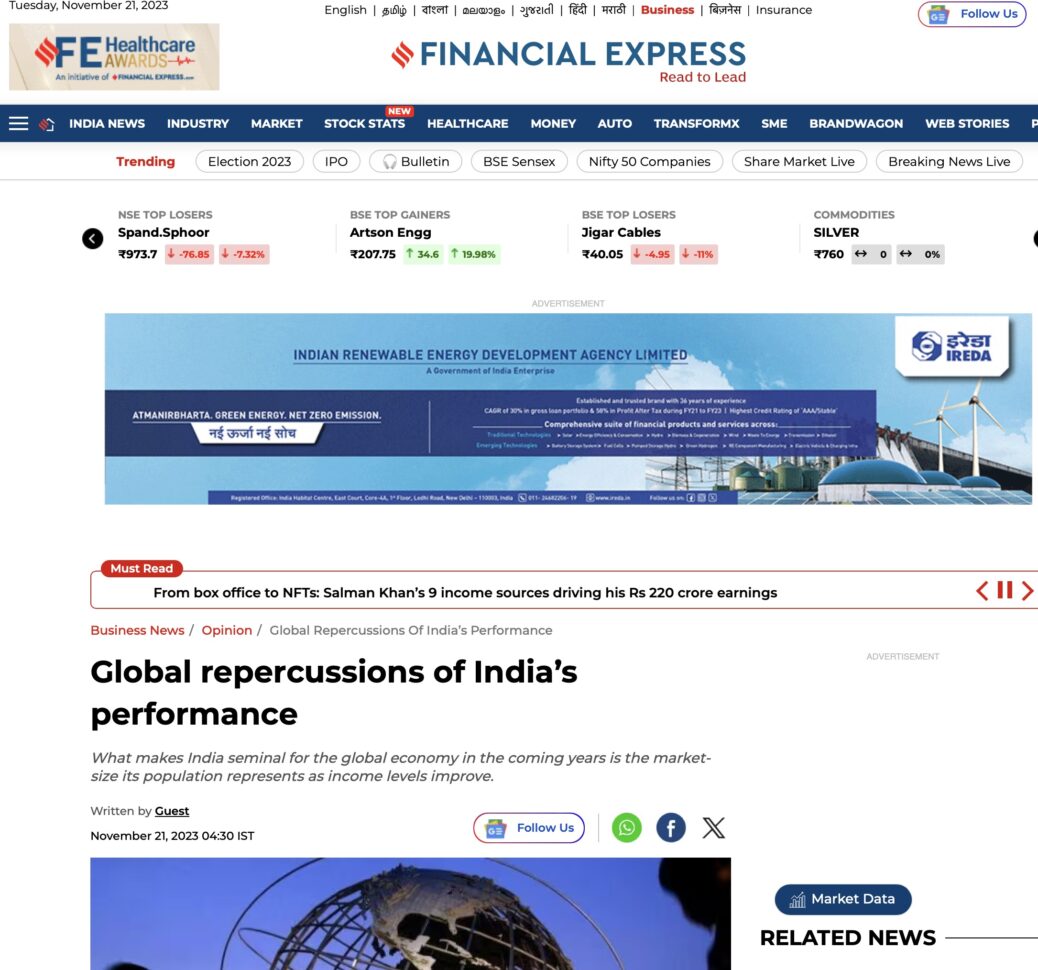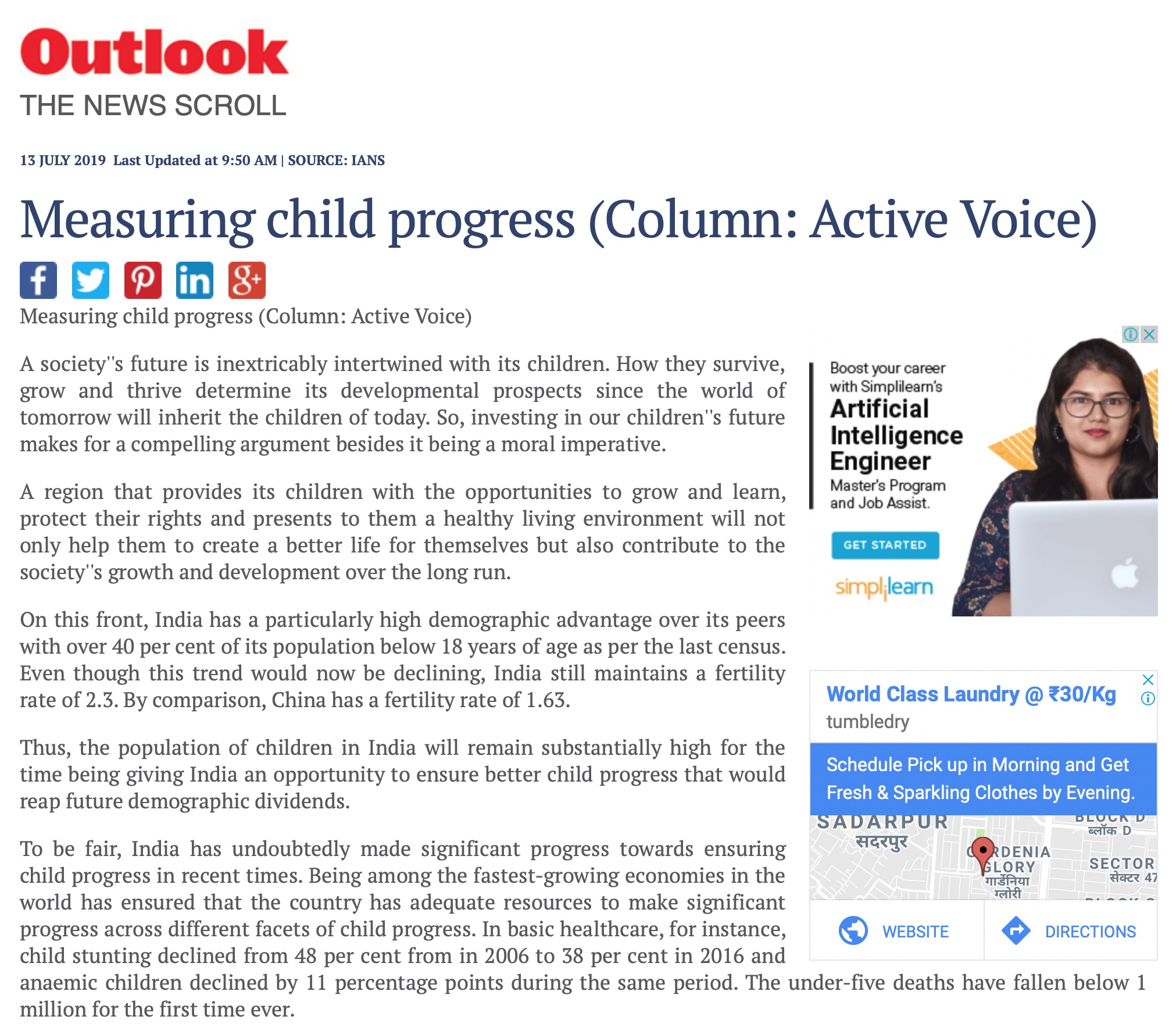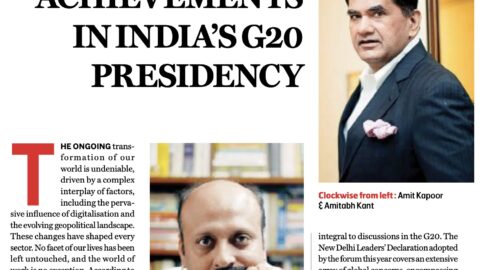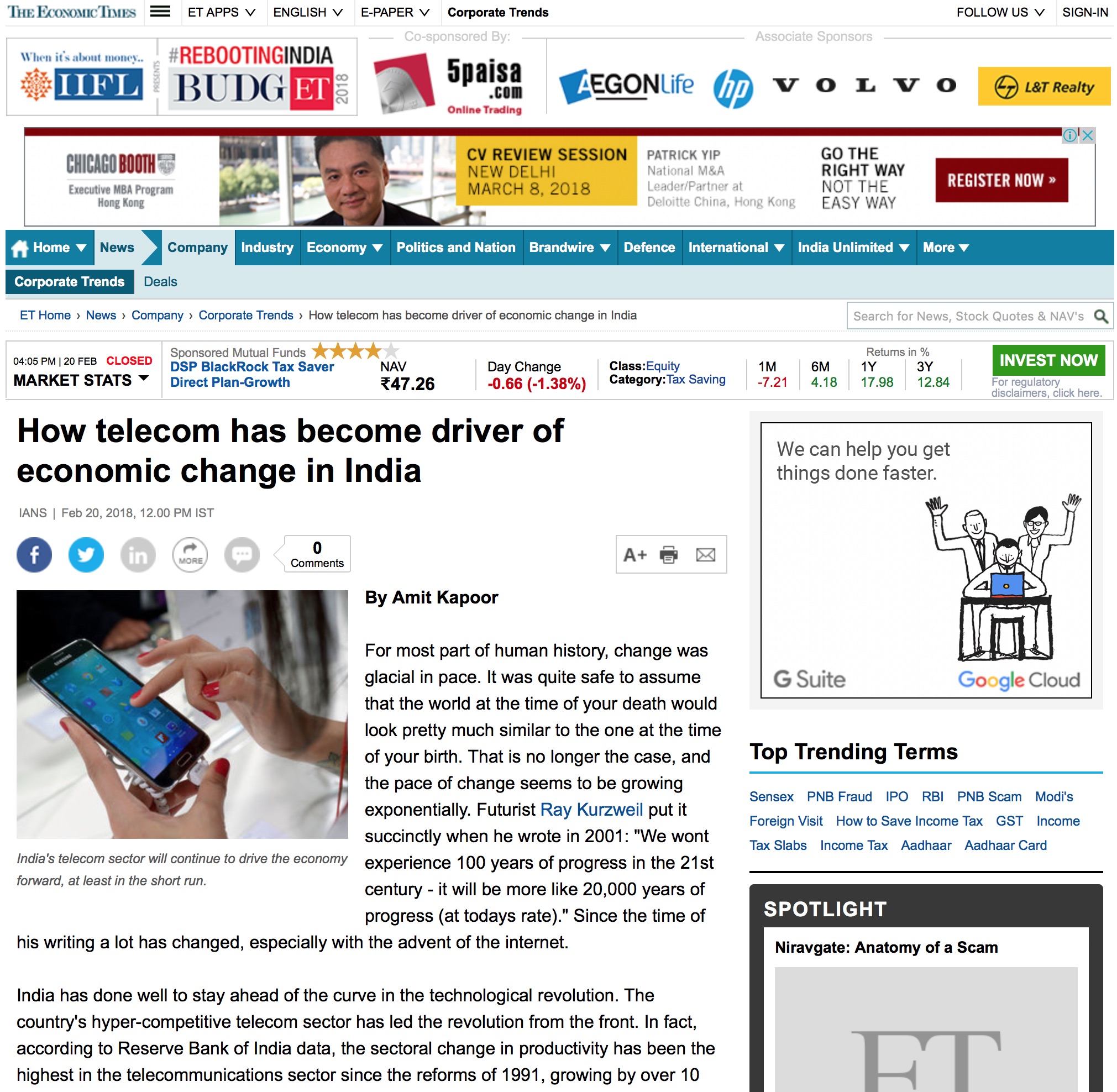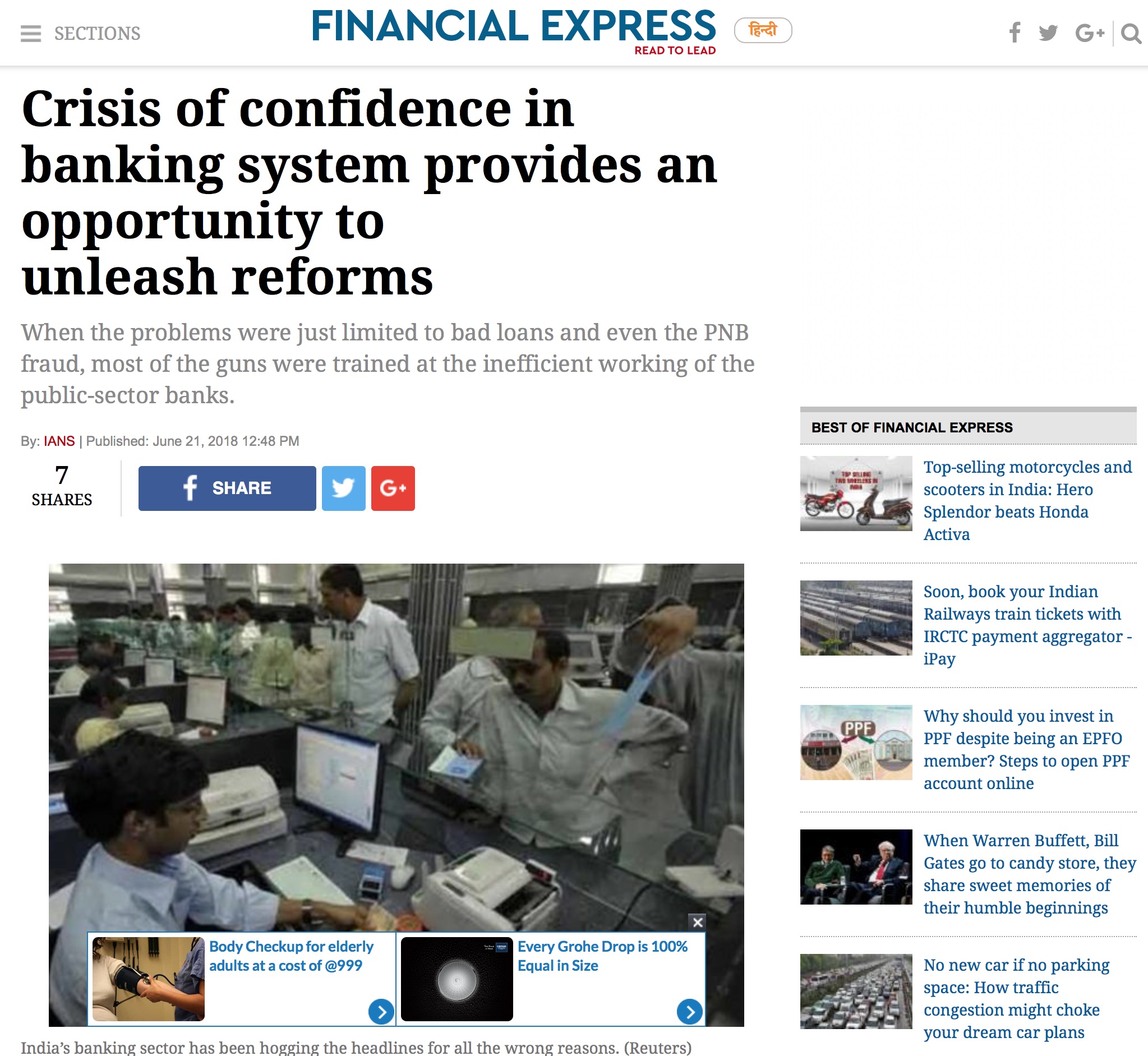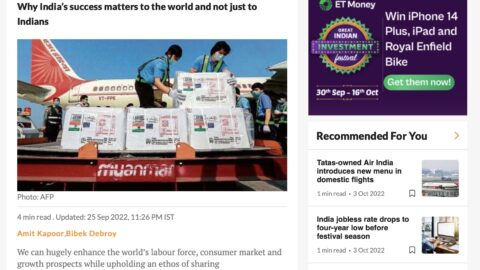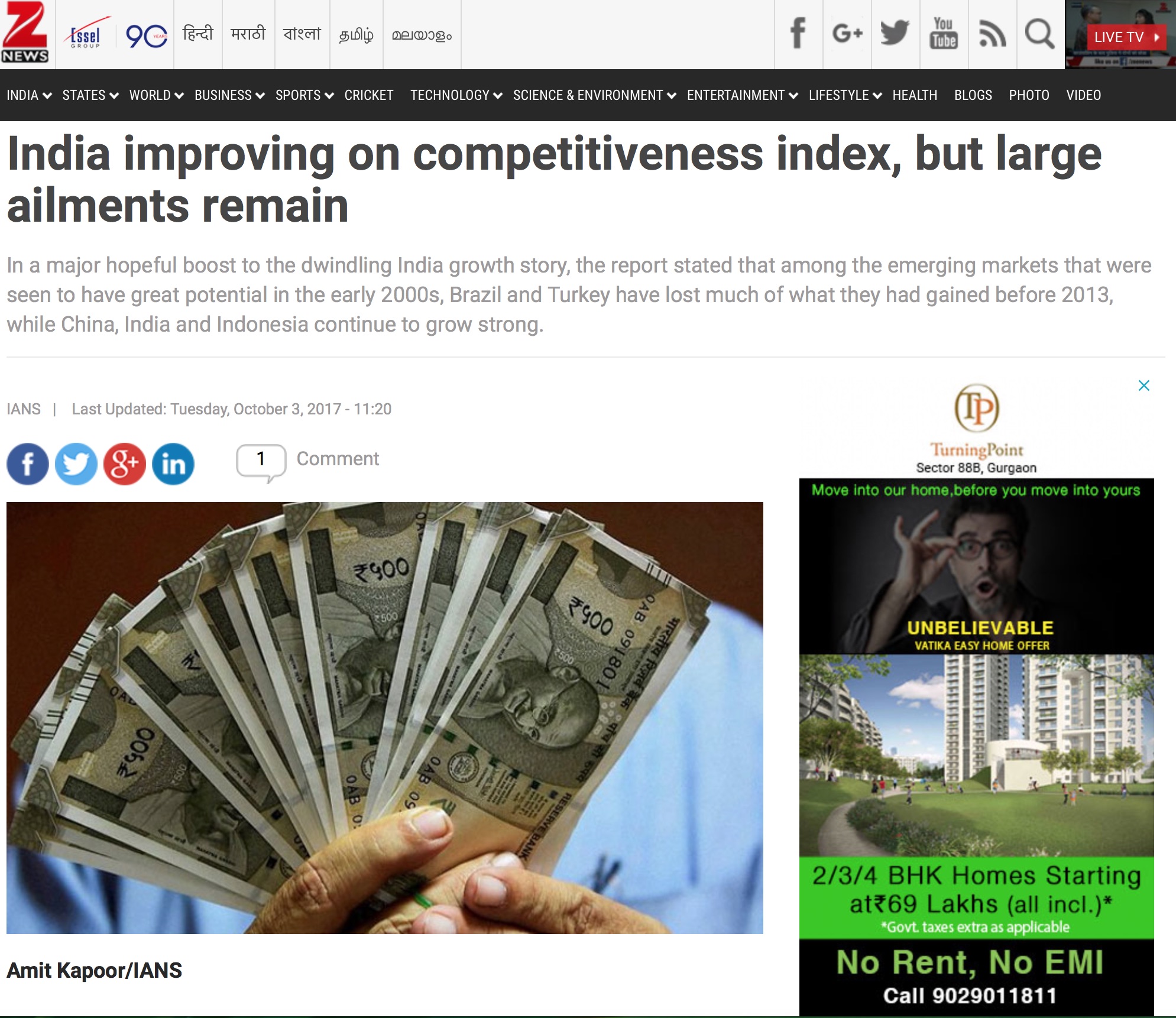Globalization has been an age-old phenomenon that can be traced right from the days of the Silk Road. The term ‘Global village’, first coined by Canadian theorist Marshall McLuhan in the 1960s, finds a place in common parlance to refer to the interconnectedness of world. What sets today apart is the extent to which this interconnectedness is felt at an individual’s level in this day and age. Be it the spread of an economic crisis originating in one corner of the world impacting the entire globe or the world joining hands to tackle a pandemic – this interconnectedness has made us all too familiar with its upside and downside. Products we use on a daily basis are, more often than not, put together through efforts from different parts of the world. As an illustration, consider a smartphone manufactured in South Korea that incorporates graphic design components from Italy, software code from Canada, semiconductor chips from Japan, and rare metals sourced from Australia. This phenomenon is a result of overlapping interlinkages that intertwine the fortunes as well as misfortunes of nations. In this context, the success or failures of a nation are no longer confined by national borders; they possess the capacity to transcend and impact regions far beyond. Through various facets of its development story, India, a prominent player on the global stage, embodies this concept. Owing to a range of factors explored below, it comes across strongly that India’s journey will have effects far beyond its borders. What are these factors that make the country hold potential to influence global dynamics?
Firstly, India’s population is a force to reckon with. Being the residence of one-sixth of the world’s population, India’s enormous human resource reservoir is a recurring topic in policy conversations. It has received more attention as a liability than an asset. But in recent times, the conversation on this pool of human resource has centered more on actions to be taken for making it an asset. The country can see a substantial increase in consumption expenditure leading it to become a bigger market. As per a World Economic Forum report, India is on track to secure its position as the world’s third-largest consumer market, behind only the United States and China. Projections indicate that consumer spending in India, which currently stands at $1.5 trillion, is anticipated to reach close to $6 trillion by the year 2030. An expanding domestic market brings opportunities to the world in terms of economic growth, investment and employment opportunities, and innovation. It goes without saying, that for this to come to fruition, India must invest in strengthening our domestic economy. Only a population with substantial disposable income can add up to constitute a strong domestic market. Another crucial aspect of our pool of human resources is the advantageous demographic dividend India has to tap into. According to the Ministry of Statistics, Planning and Implementation, from 735 million people or 60.7% of India’s population in the working age group in 2011, India will see this number reach a staggering 988.5 million in 2036. At a time when multiple advanced economies are seeing a growth in ageing population, India’s youth potential stands out. It must be kept in mind that an opportunity missed is a costly affair. Such trends do not occur twice. Investing in our youth to make them an able force calls for holistic government policies beyond investing in education and skills development. Policies including, inter alia, healthcare, infrastructure, governance, labour reform, will have a bearing on whether our demographic trend becomes a dividend or not.
Secondly, India’s potential to contribute to global growth is a major aspect that can shape global dynamics. As per a senior official in IMF, India’s contribution to global growth is projected to grow from 16% today to 18 per cent in the next five years. At present, India stands as the world’s fifth-largest economy, after the United States, China, Japan, and Germany. Additionally, S&P Global report estimates the economy’s value of USD 3.4 trillion to increase to USD 6.7 trillion by 2031. While these are some of the more positive trends witnessed, for us to truly become a major contributor to global growth, there remains extensive ground to cover still. We are yet to tackle long-standing challenges. Making growth labour-intensive, increasing female labour force participation, building resilient infrastructure, enhancing climate-change-related action, tackling social and economic inequalities, are some of the major areas requiring our focus. According to World Bank estimates, from 2011 to 2019, India is believed to have reduced the portion of its population living in extreme poverty by half. Nonetheless, there was a deceleration in the rate of poverty alleviation during the challenging period of the COVID-19 pandemic, but this trend moderated in 2021-22. Yet another aspect that is contributing to the country’s impact beyond borders, is the rising export prowess. India reached record-high export figures in both merchandise and services, with a total export value of USD 776 billion for 2022-23. In the last 20 years, FDI inflows have increased 20-fold. It is important to note that statistics on India’s positive economic outlook are encouraging, however, remaining focused on the numerous challenges that still persist is important to keep an eye on the road ahead. While India’s success will have positive aftereffects in the world, its missteps would be missed opportunities for the world. In this context, how do we make growth sustainable and resilient to external shocks is a key question to ponder. A crucial element of the answer to this question lies in broadening our lens towards growth. There is a tendency to focus solely on economic indicators. The real well-being of the nation comes through in a range of non-economic indicators. There is a need to measure India’s success also by its ability to advance social progress, enhance sustainable growth and narrow socio-economic inequalities.
The article was published with Financial Express on November 21, 2023.

